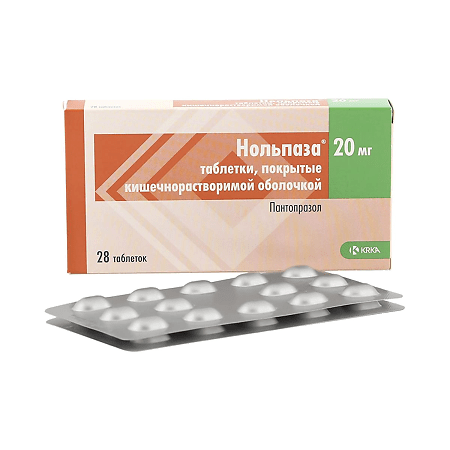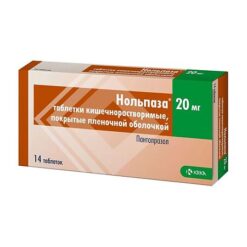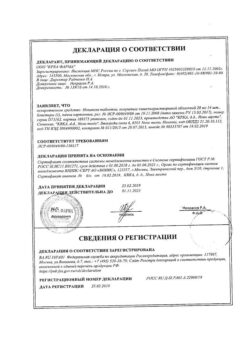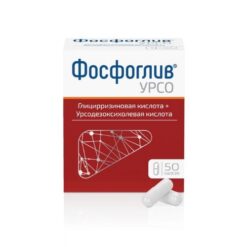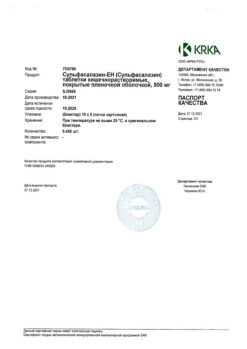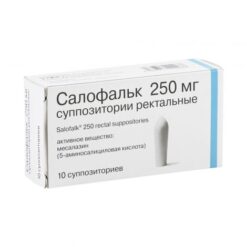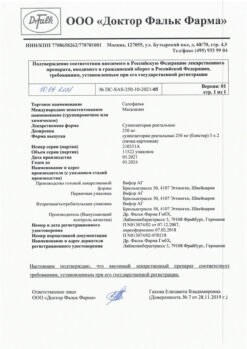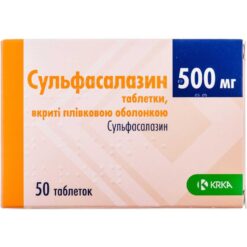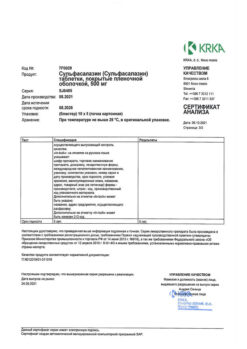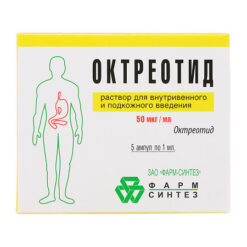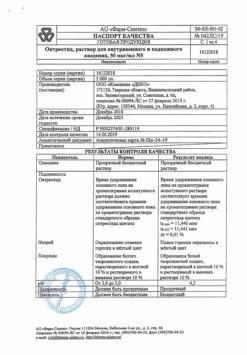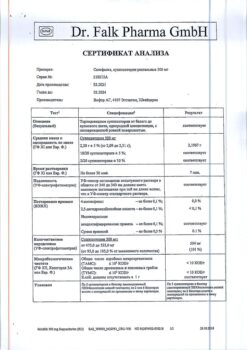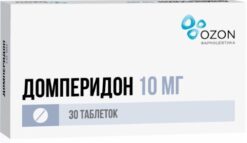No products in the cart.
Nolpaza, 20 mg 28 pcs.
€1.00
Out of stock
(E-mail when Stock is available)
EAN: 3838989556983
SKU: 511086
Categories: Medicine, Stomach, intestines, liver, Ulcer and gastritis
Description
Drugs for the treatment of disorders related to acidity. Antiulcer drugs and drugs for the treatment of gastroesophageal reflux. Proton pump inhibitors. Pantoprazole
ATC code A02BC02
Pharmacological properties
Pharmacokinetics
/strong>
Pantoprazole is absorbed rapidly, with maximum concentrations (for a dosage of 20 mg: 1-1.5 µg/ml, for 40 mg dosage: 2-3 µg/ml) in blood plasma reaches about 2-2.5 hours after oral administration and remains constant after repeated doses. Absolute bioavailability is 77%, food intake has no effect on AUC values (area under the curve “concentration-time”), maximum serum concentrations and bioavailability. In the dose range from 10 mg to 80 mg the kinetics of pantoprazole in plasma is linear.
In plasma proteins 98% of pantoprazole is bound. The volume of distribution is about 0.15 l/kg.
Pantoprazole is almost completely metabolized in the liver. The final elimination half-life is about 1 hour and the clearance is about 0.1 l/h/kg. In some cases the elimination time may be longer. Due to the specific binding of pantoprazole to the proton pump of the parietal cells, the elimination half-life does not correlate with the duration of the therapeutic effect (inhibition of hydrochloric acid secretion).
The main route of excretion of pantoprazole metabolites (about 80%) is through the kidneys; the remainder is excreted in the feces. The main metabolite detected in plasma and urine, desmethylpantoprazole, is conjugated to sulfate, the elimination half-life of which is only slightly longer (approximately 1.5 hours) than that of pantoprazole.
In patients with impaired renal function (including patients on dialysis) no dose reduction is required with pantoprazole
In patients with impaired renal function.In patients with cirrhosis (Child Class A and B), the half-life is longer (3 to 6 hours), the AUC is 3-5 times higher, and the maximum plasma concentration is 1.3 times higher, compared with healthy subjects.
In elderly patients there is a slight increase in AUC and Cmax (not clinically relevant).
Children
After using a single oral dose of 20 or 40 mg pantoprazole in children aged 5 – 16 years, the AUC and Cmax values were in between the corresponding values in adults.
Pharmacodynamics
Nolpaza® is a substituted benzimidazole that suppresses hydrochloric acid secretion in the stomach by specifically acting on the proton pumps of the parietal cells.
Pantoprazole converts to its active form in the acidic environment of the parietal cells, where it inhibits the enzyme H+/K+ATPase and blocks the final step of hydrochloric acid synthesis in the stomach. The inhibition is dose-dependent and affects both basal and stimulated acid secretion. In gastric and duodenal ulcers associated with Neelicobacter pylori, this decrease in gastric secretion increases the sensitivity of the microorganism to antibiotics.
After oral administration of Nolpaza® the antisecretory effect occurs after 1 hour and reaches a maximum after 2 – 4 hours. It does not affect gastrointestinal motility. Secretory activity returns to baseline 3 to 4 days after discontinuation of administration.
In most patients, cessation of symptoms is achieved within
2 weeks. Like other proton pump inhibitors and H2 receptor inhibitors, pantoprazole therapy reduces acidity in the stomach and thus a reversible increase in gastrin. Pantoprazole can affect hydrochloric acid secretion independently of stimulation by other substances (acetylcholine, histamine, gastrin).
Indications
Indications
For a dosage of 20 mg:
Adults and adolescents from 12 years of age and older
– symptomatic gastroesophageal reflux disease
– for long-term treatment and prevention of recurrent reflux esophagitis.
Adults
– prevention of erosive ulcerative lesions of the stomach and duodenum caused by taking non-selective non-steroidal anti-inflammatory drugs (NSAIDs) in patients with high risk and needing continuous treatment with NSAIDs (See.Special Indications)
For dosage 40 mg
Adults and adolescents 12 years and older
– reflux esophagitis
Adults
– eradication of Helicobacter pylori (H. pylori) in combination with appropriate antibiotic therapy in patients with peptic ulcer disease associated with H.pylori
-gastric and duodenal ulcer
– Zollinger-Ellison syndrome and other pathological hypersecretory conditions
Active ingredient
Active ingredient
Composition
Composition
One tablet contains
the active ingredient pantoprazole sodium sesquihydrate 22.55 mg or 45.10 mg
(equivalent to pantoprazole 20 mg or 40 mg respectively),
auxiliary substances: Mannitol, crospovidone (type B), anhydrous sodium carbonate, sorbitol (E420), calcium stearate,
The composition of the enteric coating: Hypromellose (2.4-3.6 mPas), povidone (K25), titanium dioxide (E171), iron oxide yellow (E172), propylene glycol, *methacrylic-ethyl acrylate copolymer (1:1) 30% dispersion, macrogol 6000, talcum
The 30% dispersion contains sodium lauryl sulfate (0.7% solids in the dispersion and polysorbate 80 (2.3% solids in the dispersion) as emulsifiers.
How to take, the dosage
How to take, the dosage
Nolpaza® Tablets enteric soluble should not be chewed or crushed and should be swallowed whole before meals with a small amount of fluid.
Adults and adolescents 12 years and older
Symptomatic gastroesophageal reflux disease: The recommended dose for oral administration is one 20 mg tablet daily. Relief of symptoms usually occurs within 2-4 weeks. If this time is not long enough, recovery usually occurs in an additional 4 weeks of therapy. After relief of symptoms, if they reappear it is sufficient to take a dose of 20 mg once a day on demand. Long-term maintenance therapy is prescribed if the desired relief of symptoms is not achieved with on-demand dosing.
Reflux esophagitis: The recommended dose for oral administration is one tablet of 40 mg daily. In individual cases, the dose may be doubled (increased to 2 tablets of 40 mg per day), especially when there is no clinical improvement in response to other treatment. For treatment of reflux esophagitis a 4-week course of treatment is necessary; if necessary, therapy is continued for 4 more weeks.
Long-term treatment and prevention of recurrence of reflux esophagitis: For long-term treatment, a maintenance dose of 20 mg per day is recommended, with an increase to 40 mg per day for exacerbations. After symptoms of exacerbation have disappeared, the dose may be reduced again to 20 mg pantoprazole.
Adults
.Prevention of erosive ulcerative lesions of the stomach and duodenum caused by taking non-selective non-steroidal anti-inflammatory drugs (NSAIDs) in patients at high risk andneeding ongoing treatment with NSAIDs: The recommended dose for oral administration is 20 mg of pantoprazole per day.
Eradication of H.pylori in combination with two appropriate antibiotics: In patients with gastric and duodenal ulcers associated with H.pylori, eradication of the bacterium should be performed with combination therapy. Official local guidelines (e.g., national guidelines) regarding bacterial resistance and appropriate use and prescribing of antibacterial agents should be considered. Depending on resistance, the following combinations may be recommended for eradication of H.pylori:
a) Nolpaza® 40 mg 2 times daily + amoxicillin 1000 mg 2 times daily
+ clarithromycin 500 mg 2 times daily
p> b) Nolpaza® 40 mg 2 times daily + metronidazole 400 – 500 mg 2 times daily (or 500 mg of tinidazole) + clarithromycin 250- 500 mg 2 times daily
/p>
c) Nolpase® 40 mg 2 times daily + amoxicillin 1000 mg 2 times daily
+ metronidazole 400 to 500 mg 2 times daily (or 500 mg of tinidazole).
In combination therapy of eradication of bacterium H. pylori, the second tablet of Nolpaza® should be taken 1 hour before dinner.
The combination therapy is carried out for 7 days and may be prolonged for another 7 days (total duration up to 2 weeks). Further treatment is indicated to ensure healing of ulcers after consideration of recommendations for dosing of the drug for gastric and duodenal ulcers.
In patients who are negative for H. pylori in monotherapy with Nolpase® may be guided by the following dosing guidelines:
Treatment of peptic ulcer disease: the recommended dose is 1 tablet 40 mg.
In individual cases, the dose may be doubled (increasing to 2 Nolpaz® 40 mg tablets daily), especially when there is no clinical improvement in response to other treatment. A 4-week course of treatment is usually needed for gastric ulcer, in some cases for the next 4 weeks.
Treatment of duodenal ulcer: Recommended dose is 1 tablet 40 mg. If ineffective, the dose can be doubled to 80 mg (2 tablets Nolpaz® of 40 mg) per day. Healing of duodenal ulcer usually occurs within 2 weeks, in some cases, within the next 4 weeks.
Sollinger-Ellison syndrome and other pathological conditions associated with increased gastric secretion: For long-term treatment of patients with Zollinger-Ellison syndrome and other pathological conditions associated with increased gastric secretion, treatment should be started with a daily dose of 80 mg (2 40 mg tablets). Thereafter, the dose may be increased or decreased as needed, depending on the level of hydrochloric acid secretion. At doses over 80 mg per day, the dose should be divided into two doses per day. A temporary increase in the daily dose of pantoprazole over 160 mg is possible, but should not be used longer than necessary for a period of adequate control of gastric secretion.
The duration of treatment of Zollinger-Ellison syndrome and other pathological conditions associated with increased gastric secretion is not limited and should be adapted according to clinical need.
Special patient categories
In patients with severe hepatic impairment, the daily dose of pantoprazole should not exceed 20 mg.
Nolpaza® should not be used in combination treatment with antibiotics to eradicate the bacterium H. pylori in patients with moderate to severe hepatic dysfunction and in patients with impaired renal function
.p> Dose adjustment is not required in older patients and patients with ndisordered renal function
Dose adjustment is not required.
Interaction
Interaction
Because of its profound and prolonged inhibition of gastric juice secretion, pantoprazole may reduce absorption of drugs whose bioavailability depends on the pH of the gastric environment, e.g. some antifungaldrugs from the azolegroup,
Special Instructions
Special Instructions
Hepatic impairment
In patients with severely impaired liver function during treatment with pantoprazole, especially with long-term use, the liver enzymes should be monitored regularly. If liver enzyme levels increase, treatment should be discontinued.
Simultaneous use of NSAIDs
. The use of 20 mg should be limited for the prevention of gastroduodenal ulcers in patients requiring long-term treatment with nonspecific nonsteroidal anti-inflammatory drugs (NSAIDs) and who are at increased risk of gastrointestinal complications.
The increased risk should be evaluated according to individual risk factors, such as: older age (> 65 years), gastric or duodenal ulcer, or a history of upper gastrointestinal bleeding.
Combined treatment
In combination therapy of eradication H. pylori, a brief characterization of the medications involved must be considered.
In the presence of alarming symptoms
. If any alarming symptoms are present (e.g., significant unintentional weight loss, recurrent bouts of vomiting, dysphagia, vomiting blood, anemia, or melena) and if gastric ulcer is present or suspected, malignancy should be excluded, as taking pantoprazole may relieve symptoms and delay diagnosis. The possibility of malignancy should be ruled out before starting treatment.
Combined treatment with atazanavir
The use of atazanavir with proton pump inhibitors is contraindicated.
Influence on vitamin absorptionB12
Pantoprazole, like all drugs that block the production of hydrochloric acid, may decrease the absorption of vitamin B12 (cyanocobalamin) due to hypo- and achlorhydria. This should be considered during long-term therapy in patients with low body weight or with increased risk of decreased absorption of vitamin B12 or if corresponding clinical symptoms are observed.
Long-term treatment
Patients should be monitored regularly during long-term treatment, especially when treated for more than 1 year.
Gastrointestinal infections caused by bacteria
Pantoprazole, like all proton pump inhibitors, increases bacteria normally present in the upper gastrointestinal tract. Treatment with Nolpase® may increase the risk of gastrointestinal infections caused by bacteria such as Salmonella and Campilobacter.
Hypomagnesemia
There have been cases of severe hypomagnesemia in patients treated with proton pump inhibitors (PPIs) such as pantoprazole for at least three months and, in most cases, for up to a year. Serious manifestations of hypomagnesemia such as fatigue, tetany, delirium, seizures, dizziness, and ventricular arrhythmias may occur, but may occur without obvious symptoms and unnoticed. In most patients, hypomagnesemia resolves after magnesium deficiency is corrected and PPI treatment is discontinued.
In patients on long-term treatment or patients taking PPIs with digoxin or other drugs that may cause hypomagnesemia (e.g., diuretics), magnesium levels should be measured before starting PPI treatment and periodically during treatment.
Hip fracture of the wrist and spine
The use of proton pump inhibitors, especially at high doses and for a long time (> 1 year), may slightly increase the risk of hip, wrist, and spine fractures, primarily in the elderly or in the presence of other recognized risk factors. Observational studies show that proton pump inhibitors can increase overall fracture risk by 10-40%. Some of this increase may be due to other risk factors. Patients at risk for osteoporosis should receive care according to current clinical guidelines and should take sufficient vitamin D and calcium.
Associates
Nolpaza® contains sorbitol. Patients with rare hereditary problems of fructose intolerance should not take this medicine.
Pediatric use
Because of insufficient safety and efficacy data, pantoprazole is not recommended for use in children younger than 12 years of age with reflux esophagitis, symptomatic gastroesophageal reflux disease.
The data on the use of pantoprazole in children and adolescents under 18 years of age for gastric and duodenal ulcer disease, eradication of Helicobacter pylori, Zollinger-Ellison syndrome, for prevention of erosive ulcerative lesions of the stomach and duodenum caused by non-selective NSAIDs are not available.
Pregnancy and lactation
Animal studies suggest reproductive toxicity of pantoprazole.
Nolpaza® should not be used during pregnancy unless necessary.
Pantoprazole is excreted in breast milk. Breastfeeding should be stopped during treatment with the drug.
Particular effects of the drug on driving or potentially dangerous machinery
An adverse adverse reaction such as dizziness and visual disturbances may occur during treatment. In such cases, patients should not drive vehicles or operate machinery.
Synopsis
Synopsis
Contraindications
Contraindications
– hypersensitivity to pantoprazole, substituted benzimidazoles
or excipients of the drug
– co-administration with atazanavir
Side effects
Side effects
Infrequent (⥠1/1, 000 to < 1/100)
sleep disturbances
headache, dizziness
diarrhea, nausea, vomiting, abdominal bloating and flatulence, constipation, dryness
Overdose
Overdose
Similarities
Similarities
Additional information
| Weight | 0.016 kg |
|---|---|
| Shelf life | 5 years Do not use after the expiration date. |
| Conditions of storage | Store in the original packaging, at a temperature not exceeding 30 º C, in a moisture-proof place Keep out of reach of children! |
| Manufacturer | KRKA dd Novo mesto, Slovenia |
| Medication form | enteric soluble tablets |
| Brand | KRKA dd Novo mesto |
Other forms…
Related products
Buy Nolpaza, 20 mg 28 pcs. with delivery to USA, UK, Europe and over 120 other countries.

